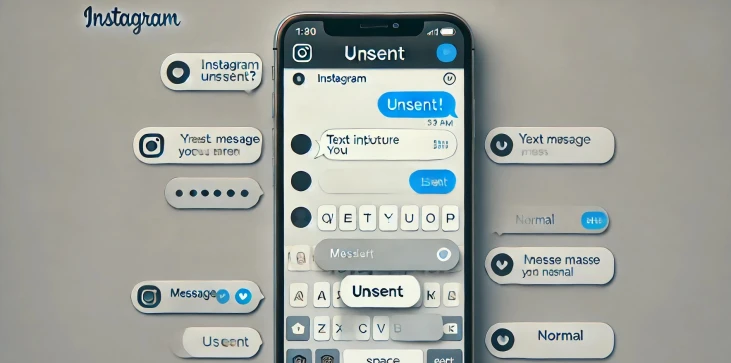
In the fast-paced world of social media, sending the wrong message is easier than ever. With just one click, you might send a text to the wrong person, share a photo you didn’t mean to, or simply change your mind about a conversation. Fortunately, the "unsend message" feature has been developed on platforms like Facebook, Instagram, and TikTok to help users retract their messages after they’ve been sent. In this article, we’ll explore the ins and outs of this feature across various platforms, explain how it works, and provide essential tips for using it effectively.
Facebook Messenger introduced the "unsend" option to allow users to delete a message for both the sender and the recipient. To do this, simply press and hold on to the message you wish to delete, then select "Remove for Everyone." This option is available for a limited time after sending the message, typically 10 minutes. After the time frame, you will only be able to delete the message for yourself. It’s important to note that the recipient may have already seen the message before it is removed, so act quickly!
Instagram’s "unsend" feature is simple and works for both direct messages (DMs) and group conversations. To unsend a message, tap and hold the message in the chat and select "Unsend." This will remove the message for all users in the conversation, without any time restrictions. However, just like with Facebook, there is always a chance that someone has seen the message before it was unsent. Instagram won’t notify other users that the message was removed, making it a useful tool for correcting mistakes discreetly.
On TikTok, the process to unsend a message is slightly different. TikTok allows users to delete messages in chats, but similar to Facebook Messenger, this feature is time-sensitive. If you wish to delete a message, tap on the message, hold, and select "Delete." Unlike other platforms, TikTok does not yet have a universal "unsend" option, meaning the message might remain visible to others until it is deleted. TikTok’s messaging system is still developing, so it’s important to stay updated on potential changes to this feature.
While the "unsend message" option is a lifesaver, it does have its limitations. The feature works best when used immediately after realizing a mistake, as some platforms, like Facebook, impose time restrictions. Additionally, even if a message is unsent, the recipient might still have seen a notification or preview of the message. To avoid unnecessary embarrassment, it’s wise to double-check messages before sending. Remember, once a message is out, there’s always a chance someone could capture it via screenshots.
The "unsend message" feature has become an indispensable tool in modern social media interactions, offering users a second chance to retract their words or media. While it’s convenient, understanding its limitations and how each platform handles the process is crucial. Whether you’re chatting on Facebook Messenger, Instagram, or TikTok, acting quickly and knowing the specific steps can help you avoid misunderstandings or embarrassing mistakes. Keep these tips in mind the next time you send a message you might regret!

When you unsend a message on Instagram, the message is removed from both your chat and the recipient's chat. There is no notification that a message was unsent, making it a discreet way to correct mistakes. However, keep in mind that the recipient may have already seen the message before it was unsent.
Currently, TikTok does not have a specific "unsend" feature like Instagram. While you can delete messages from your chat, they might still be visible to others until they are deleted. TikTok’s messaging system is still evolving, so stay informed on updates regarding this functionality.
If the platform does not support an "unsend" feature or you’ve exceeded the time limit, alternatives include explaining the mistake to the recipient, apologizing, or following up with a correction. In some cases, deleting the entire conversation might help, but this will only remove the chat on your side, not the recipient's.